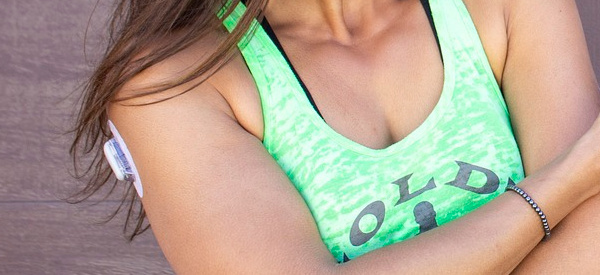Government
Glucose Monitor Can Reveal Prediabetes in Just 12 Hours
Can AI help turn a continuous glucose monitor (CGM) into a tool to screen for diabetes? It seems so, at least according to the findings from researchers…


Can AI help turn a continuous glucose monitor (CGM) into a tool to screen for diabetes? It seems so, at least according to the findings from researchers at Klick Applied Sciences, who say that they’ve developed a method to diagnose diabetes and prediabetes with just 12 hours worth of glucose readings. With this data, machine learning models that were developed by the research team help determine if a person is diabetic, prediabetic, or healthy. Researcher Jouhyun Jeon says, “We have demonstrated that 12 hours of monitoring can make a big difference in the lives of people at risk of developing diabetes while there’s still time to course correct.”
To test the detection method, Klick scientists conducted a study with 600 people who fit into three categories: healthy, prediabetic, and those with Type 2 diabetes. The study’s participants wore CGMs for an average of 12 days, and their glucose readings were then analyzed with some help from AI. It turned out that 12 hours’ worth of readings may be all that’s needed. According to Jeon, their 12-hour method was on par with the 12-day analysis, correctly identifying prediabetes in about two-thirds of the people in that group, and showing similar accuracy in identifying healthy participants and those who have Type 2 diabetes.
This means that a tool to screen for diabetes could already be in the hands of millions; one recent study found that 2.4 million people in America use CGMs. And this method of detection could help tens of millions more who have prediabetes and don’t know it. According to the Centers for Disease Control and Prevention (CDC), around 96 million adults in America (over 1 in 3) have prediabetes. And the vast majority of these folks — more than 8 in 10 — are unaware that they have the condition. The prevalence of undiagnosed diabetes in the United States is nearly as striking. The CDC says that over 37 million Americans (around 1 in 10) have diabetes, and around 1 in 5 people in this group don’t know it.
A simple low-cost tool for diabetes detection and prevention can be a boon in underserved communities. The CDC finds that diabetes-related deaths are more common among people with lower socioeconomic status and among those who are members of ethnic and racial minority groups. Klick Applied Sciences Michael Lieberman adds, “An overwhelming majority of people with early-onset diabetes are not aware of their condition and don’t consult a physician until their ability to control their blood sugar levels is irreparably damaged….Our research has tremendous potential to help move blood glucose digital biomarkers into a position where they can be an invaluable tool for physicians for preventing diabetes before it starts.”

Here Are the Champions! Our Top Performing Stories in 2023
It has been quite a year – not just for the psychedelic industry, but also for humanity as a whole. Volatile might not be the most elegant word for it,…
AI can already diagnose depression better than a doctor and tell you which treatment is best
Artificial intelligence (AI) shows great promise in revolutionizing the diagnosis and treatment of depression, offering more accurate diagnoses and predicting…
Scientists use organoid model to identify potential new pancreatic cancer treatment
A drug screening system that models cancers using lab-grown tissues called organoids has helped uncover a promising target for future pancreatic cancer…













